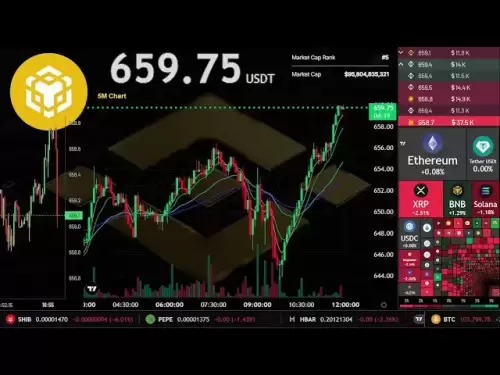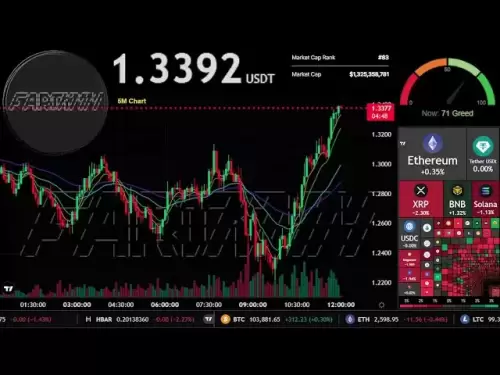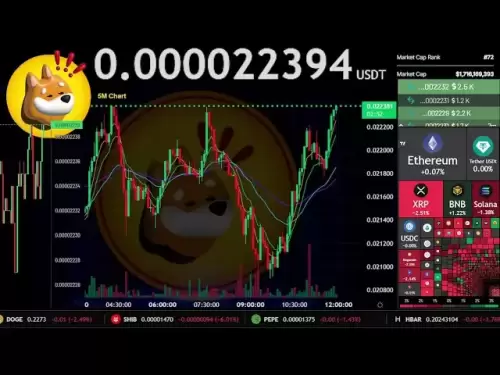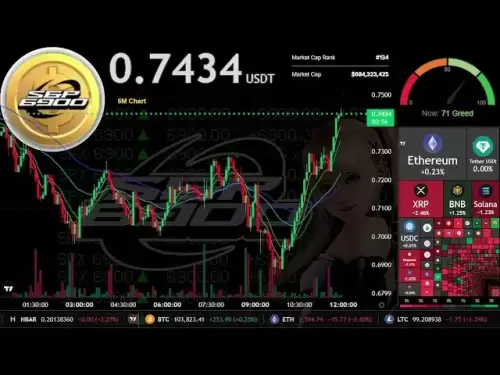 |
|
 |
|
 |
|
 |
|
 |
|
 |
|
 |
|
 |
|
 |
|
 |
|
 |
|
 |
|
 |
|
 |
|
 |
|
Cryptocurrency News Articles
Bitcoin (BTC) Struggles to Break Above $105,000 as US Macroeconomic Headwinds Remain a Challenge
May 16, 2025 at 05:04 am
Bitcoin (BTC) has struggled to break above $105,000 since May 10, leading traders to question whether the bullish momentum has faded.
Bitcoin (BTC) price has struggled to break above $105,000 since May 10, leading some traders to question whether the bullish momentum has stalled.
After hitting a high of $104,800 on May 14, Bitcoin dropped to as low as $101,800 on May 15, testing the crucial $100,000 support level.
The cryptocurrency managed to rebound and was trading above $104,000 at the time of writing, but demand for leveraged long positions has dropped sharply, as evidenced by the decline in the Bitcoin futures premium.
This premium, which measures the difference in price between futures contracts and the spot market, typically rises during periods of bullish enthusiasm, encouraging traders to open leveraged positions.
However, the annualized premium on Bitcoin futures peaked at 7% on May 14, before falling to 5%, which is closer to the neutral-to-bearish threshold and in line with the level seen four weeks ago, when BTC was trading around $84,500.
This decrease in demand for leveraged bullish positions might be linked to broader macroeconomic uncertainty, as Bitcoin's price has been closely following movements in the stock market.
The S&P 500 futures reversed early weakness on May 15, coinciding with Bitcoin's rebound from $101,800 to $104,000. Investors appear to be more confident that the U.S. Treasury will be forced to inject liquidity after Federal Reserve Chair Jerome Powell warned that "supply shocks" could keep interest rates higher than anticipated for longer.
Signs of economic weakness have also emerged. The U.S. Bureau of Labor Statistics reported that April's Producer Price Index fell 0.5% from the previous month, while economists surveyed by FactSet had expected an increase of 0.2%.
According to Reuters, investors' limited risk appetite is further influenced by ongoing global trade tensions, with the U.S.–China tariff agreement serving as a temporary solution.
Demand for fixed income has risen, with the yield on the 10-year U.S. Treasury dropping to 4.45% after reaching 4.55% on May 14, reversing the previous week's trend.
Historically, Bitcoin tends to perform better when government bond yields are rising, as this signals reduced confidence in the Treasury's ability to manage its debt.
Bitcoin's rally to $105,000 depends on macroeconomic trendsTo gauge whether traders are simply avoiding leverage or actively betting on a price decline, it is useful to examine Bitcoin options demand. Typically, periods of bearish sentiment push the BTC delta skew indicator above the neutral 6% threshold.
Contrary to expectations, Bitcoin put (sell) options have been trading at a discount compared to call (buy) options, signaling strong confidence in the $100,000 support level. However, the optimism seen on May 14 has faded, with the indicator now at a neutral -4%.
Since Bitcoin's price has closely mirrored the U.S. stock market, the chances of breaking above $105,000 hinge heavily on macroeconomic developments, such as trends in the U.S. Federal Reserve's balance sheet and recession risks. Notably, Bitcoin's high correlation with the S&P 500 rarely persists for more than two months.
Net inflows of $320 million into U.S. Bitcoin exchange-traded funds (ETFs) on May 14 indicate ongoing institutional demand. This suggests that investors are gradually shifting their perception of Bitcoin from a risk-on asset to a non-correlated instrument, which might decrease the likelihood of sharp price corrections, even without strong leveraged bullish positions.
Disclaimer:info@kdj.com
The information provided is not trading advice. kdj.com does not assume any responsibility for any investments made based on the information provided in this article. Cryptocurrencies are highly volatile and it is highly recommended that you invest with caution after thorough research!
If you believe that the content used on this website infringes your copyright, please contact us immediately (info@kdj.com) and we will delete it promptly.
-

-

-

- Al Abraaj Restaurants Group Becomes the First Public Company in the Middle East to Hold Bitcoin on Its Balance Sheet
- May 16, 2025 at 12:45 pm
- In a watershed moment for Gulf capital markets, Al Abraaj Restaurants Group (trading on the Bahrain Bourse as ABRAAJ) disclosed on Wednesday that it has transferred part of its corporate treasury into Bitcoin
-

-

-

-

-

- How Donald Trump's Crypto Dealings Push the Bounds of Corruption
- May 16, 2025 at 12:35 pm
- By Kyle Chayka
-





























































